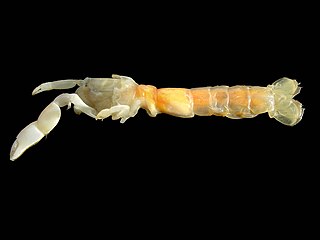
The Eagles are an American rock band formed in Los Angeles in 1971. With five number-one singles and six number-one albums, six Grammy Awards and five American Music Awards, the Eagles were one of the most successful musical acts of the 1970s in North America and are one of the world's best-selling bands, having sold more than 200 million records worldwide, including 100 million sold in the US alone. They were inducted into the Rock and Roll Hall of Fame in 1998 and were ranked number 75 on Rolling Stone's 2004 list of the "100 Greatest Artists of All Time". Founding members Glenn Frey, Don Henley, Bernie Leadon, and Randy Meisner were recruited by Linda Ronstadt as band members, some touring with her, and all playing on her third solo studio album, before venturing out on their own on David Geffen's new Asylum Records label.

Papilio is a genus in the swallowtail butterfly family, Papilionidae, as well as the only representative of the tribe Papilionini. The word papilio is Latin for butterfly.

"Hotel California" is a song by American rock band Eagles, released as the second single of their album of the same name on February 22, 1977. Songwriting credits go to Don Felder (music), Don Henley, and Glenn Frey (lyrics). The Eagles' original recording of the song features Henley singing lead vocals and concludes with an iconic 2 minute and 12 seconds long electric guitar solo performed by Felder with a Gibson Les Paul Gibson EDS-1275 double neck and Joe Walsh with a Fender Telecaster, in which they take turns playing the lead before harmonizing and playing arpeggios together towards the fade-out.

The Sesiidae or clearwing moths are a diurnal moth family in the order Lepidoptera known for their Batesian mimicry in both appearance and behaviour of various Hymenoptera.

Donald William Felder is an American musician who was the lead guitarist of the rock band Eagles from 1974 to 2001. He was inducted into the Rock and Roll Hall of Fame in 1998 with the Eagles. Felder was inducted into the Musicians Hall of Fame and Museum in 2016.

Baron Cajetan von Felder was an Austrian lawyer, entomologist and liberal politician. He served as mayor of Vienna from 1868 to 1878.

Simcha Felder is an American politician from Borough Park, Brooklyn. He represents the 22nd district of the New York State Senate. Felder has been elected to multiple offices as a Democrat, but is known for having caucused with the Republicans during the early part of his New York State Senate tenure. Prior to serving in the State Senate, Felder represented the 44th district in the New York City Council.

Allotinus is a genus of butterflies in the family Lycaenidae. The genus was erected by Cajetan Felder and Rudolf Felder in 1865. The members (species) of this genus are found in the Indomalayan realm.

Pinnotheridae is a family of tiny soft-bodied crabs that live commensally in the mantles of certain bivalve molluscs and the occasional large gastropod mollusc species in genera such as Strombus and Haliotis. Tunicotheres moseri is commensal with a tunicate. The earliest fossils attributable to the Pinnotheridae date from the Danian.

Rudolf Felder was an Austrian jurist and entomologist. He was mainly interested in Lepidoptera, amassing, with his father, Cajetan Felder, a huge collection.

Callianassidae is a family of ghost shrimp crustaceans belonging to the infraorder Axiidea, within the order Decapoda.

Cain Hope Felder was an American biblical scholar, serving as professor of New Testament language and literature and editor of The Journal of Religious Thought at the Howard University School of Divinity. He also served as chair of the Doctor of Philosophy program and immediate past chair of the Doctor of Ministry program. He had been on Howard's faculty from 1981 until his retirement in 2016.

Phostria is a genus of moths of the family Crambidae.
Marcel Felder is a Uruguayan professional tennis player. His highest ranking in singles was No. 227 on 28 December 2009. His highest ranking in doubles was 82 on 11 June 2012. Felder won a gold medal in singles in men's tennis at the 2013 Maccabiah Games in Israel.

Byasa mencius is a butterfly from the family Papilionidae (swallowtails). It is found in China. The species was first described by Cajetan Felder and Rudolf Felder in 1862.
Snellenia coccinea is a species of moth of the Stathmopodidae family. It was described by Walsingham in 1889. It is found in the Himalaya.
Snellenia hylaea is a species of moth of the family Stathmopodidae. It was described by Alfred Jefferis Turner in 1913. It is found in New South Wales and Queensland.

Stathmopodidae is a family of moths in the moth superfamily Gelechioidea described by Edward Meyrick in 1913.

Kahlil Ameer "Kay" Felder Jr. is an American professional basketball player for the Beijing Royal Fighters of the Chinese Basketball Association (CBA). Felder, a 5-foot-9-inch (1.75 m) point guard, declared for the 2016 NBA draft at the conclusion of his junior year at Oakland. Felder is the Horizon League career assists leader.

The 2018 New York State Senate elections were held on November 6, 2018, to elect representatives from all 63 State Senate districts in the U.S. state of New York. Primary elections were held on September 13, 2018.
















